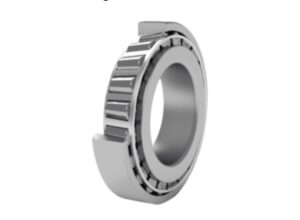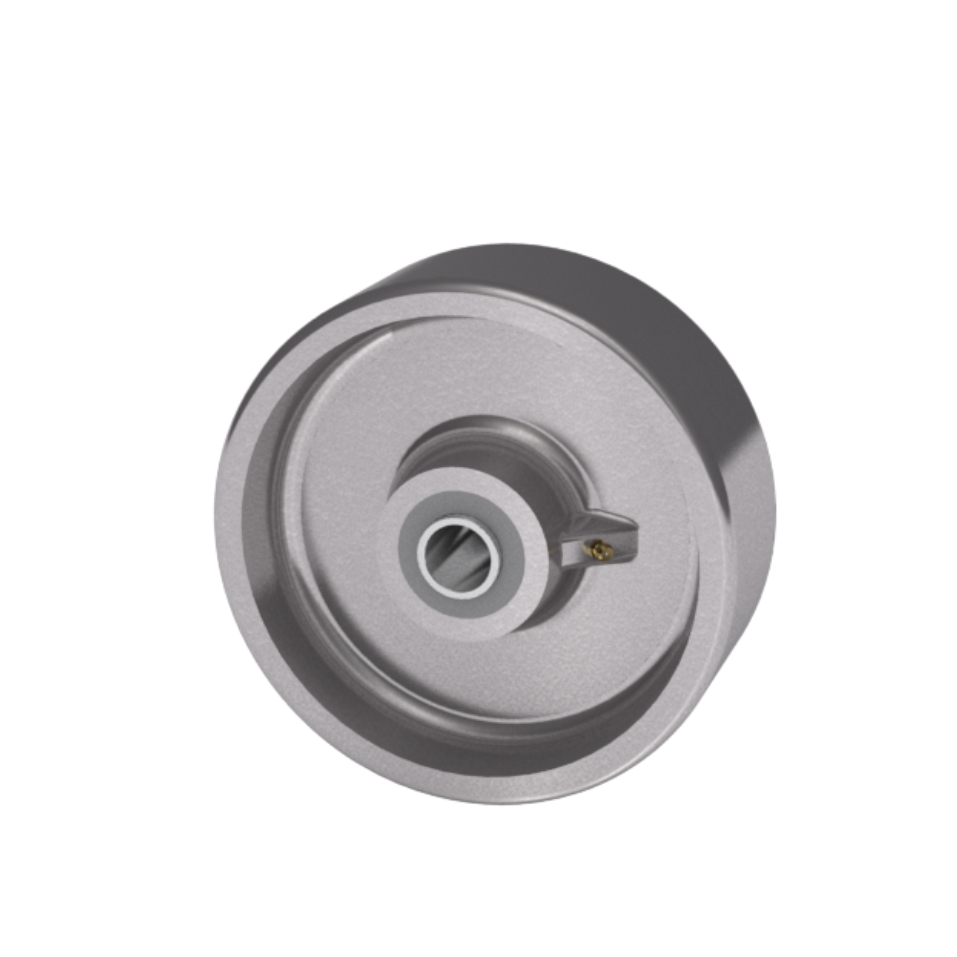Understanding the caster wheel types is important for optimizing the efficiency and safety of the facilities. This article delves into the fundamental differences between rigid and swivel caster wheels, and their applications in heavy-duty environments, and explores the vast array of heavy-duty wheel types including pneumatic, semi-pneumatic, TWERGO, and V groove caster wheels.
With a focus on material build quality, special features, and selecting the right wheel type for specific operational needs, we provide an insightful guide for professionals navigating the complexities of heavy-duty caster wheels.
Understanding Caster Wheel Types: Rigid vs. Swivel
-
Fundamental Differences
Rigid caster wheels are known for their straightforward design. They move in a straight line, offering simplicity in motion. This linear movement results from the wheel being fixed to a stationary fork.
In contrast, swivel caster wheels provide a higher degree of maneuverability. They feature a rotating joint, allowing the wheel to turn freely in any direction. This rotational capability enables more versatile movement, especially in confined spaces.
-
Applications in Heavy-Duty Settings
In heavy-duty environments, the choice between rigid and swivel casters depends on specific requirements.
Rigid casters are ideal for transporting heavy loads over long, straight paths. Their design supports direct and stable movement, making them suitable for applications where precision and alignment are key. Examples include moving heavy machinery in manufacturing plants or transporting large containers in warehouses.
On the other hand, Swivel casters excel in areas requiring high flexibility and maneuverability. They are perfect for equipment that needs to navigate tight corners or change directions frequently. This makes them a preferred choice in settings like automotive workshops, where equipment must be moved around obstacles, or in hospital settings for the easy maneuverability of medical carts.
| Feature | Rigid Caster Wheels | Swivel Caster Wheels |
| Movement | Straight-line motion | 360-degree rotation |
| Maneuverability | Limited to forward and backward | High, in any direction |
| Best Used For | Long, uninterrupted paths | Tight spaces and frequent direction changes |
| Load Stability | High, ideal for heavy loads | Moderate, with careful handling |
| Typical Applications | Manufacturing plants, warehouses | Workshops, hospitals, retail spaces |
Classification of Casters w.r.t. Heavy-Duty Wheel Types:
-
H.D. Pneumatic Wheels
H.D. (Heavy-Duty) Pneumatic wheels are designed for resilience and durability. They typically feature thick rubber tires with compressed air mounted on a strong metal rim. This construction provides a cushioned ride for transporting delicate or shock-sensitive materials.
Their primary advantage lies in their ability to navigate rough terrains smoothly. The air cushioning absorbs shocks and impacts, making them ideal for outdoor applications or uneven surfaces in construction sites and warehouses.
-
Standard Pneumatic Wheels
Standard Pneumatic wheels are similar in design but differ in load capacity and durability. They are less robust than their heavy-duty counterparts, making them suitable for lighter applications.
These wheels are commonly used when necessary cushioning, but the loads are not excessively heavy. Examples include mobile carts in retail or light equipment in workshops.
-
Semi-Pneumatic Wheels
Semi-pneumatic wheels combine features of both pneumatic and solid wheels. They have a rubber tire but without air. This design compromises the shock absorption of pneumatic wheels and the maintenance-free aspect of solid wheels.
They are particularly useful in environments where flat tires are a concern, but some cushioning is still needed.
-
TWERGO Wheels
TWERGO wheels feature a unique, patented design with multiple wheel faces. This reduces friction and the force required to start and maintain motion, reducing operators’ strain.
Their ergonomic advantage is significant in environments where manual handling of heavy loads is frequent, such as in manufacturing or warehousing.
-
V-Groove Wheels
V-Groove wheels are designed with a ‘V’ shaped groove, allowing them to run on tracks. This design ensures precise alignment and direction, ideal for controlled movement along a predetermined path.
They are extensively used in applications like gate tracks, assembly lines, or other situations where guided movement is essential.
| Wheel Type | Design | Key Feature | Ideal Environment |
| H.D. Pneumatic | Air-filled rubber tire | Shock absorption | Rough terrains, outdoor use |
| Standard Pneumatic | Similar to H.D., less robust | Lighter cushioning | Retail, light workshops |
| Semi-Pneumatic | Rubber without air | Maintenance-free, some cushioning | Schools, hospitals |
| TWERGO | Multiple wheel faces | Reduces push force | Manufacturing, warehousing |
| V-Groove | ‘V’ shaped groove | Precise track movement | Assembly lines, guided paths |
Types of Heavy-Duty Caster Wheels w.r.t. Materials and Strength:
-
Variety of Materials:
Forged Steel: Forged steel is renowned for its strength and durability, making it an excellent choice for heavy-duty wheels. It withstands high loads and is resistant to impacts, which is crucial in industrial settings where heavy equipment is frequently moved.
Polyurethane: Polyurethane wheels offer a unique blend of durability and floor protection. They are hard-wearing yet gentle on surfaces, reducing the risk of floor damage. This makes them ideal for use in environments where load-bearing capacity and floor care are important.
Cast Iron: Cast iron wheels are known for their ability to handle extremely heavy loads. They are particularly effective in environments with high temperatures or where exposure to corrosive substances is common, such as in foundries or chemical plants.
-
Strength, Design, and Durability:
The material of a caster wheel directly influences its performance and longevity. The wheel’s strength is paramount in heavy-duty applications to ensure safety and efficiency.
The design of the wheel, in conjunction with the chosen material, also plays a critical role in its suitability for specific environments. For example, wheels with thicker treads or specific tread patterns can offer better grip and stability on uneven surfaces.
Durability is another crucial aspect. Wheels used in heavy-duty settings must withstand constant use, often under substantial weight and in challenging conditions. This necessitates strong materials resistant to wear, tear, and environmental factors like temperature extremes or chemical exposure.
Special Features of Heavy-Duty Casters:
-
Bearing Types:

Roller Bearings: Roller bearings are ideal for heavy-duty applications due to their ability to withstand high loads. They reduce friction, making movement smoother even under substantial weight.

Tapered Bearings: Tapered bearings excel in applications with radial and thrust loads. They are designed to handle heavy loads while ensuring alignment and stability.

Ball Bearings: Ball bearings are common in caster wheels for their versatility. They provide smooth movement and can handle radial and thrust loads, making them suitable for various heavy-duty applications.
-
Keyway and Bottom Hole Patterns:
Keyways and bottom hole patterns are crucial in caster wheel stability and fitting. They ensure a secure wheel attachment to the equipment, reducing the risk of detachment under heavy loads. The precise alignment facilitated by these features also contributes to smoother wheel movement and enhanced load-bearing capacity.
Casters with Different Types of Swivel Locks:
- Demountable Swivel Lock: Suitable for up to the 71 Series, offering flexibility in installation.
- Factory Installed Swivel Lock: Features notches every ninety degrees for linear movement control.
- Foot Actuated Swivel Lock: Ergonomically designed for easy operation, enhancing speed and convenience.
- Heavy Duty Demountable Swivel Lock: Designed for the 80s and 90s series, offering robust locking in demanding environments.
- Heavy Duty Swivel Lock: Features a longer handle for better accessibility and strength.
- Passive Swivel Lock: Ideal for applications requiring full mobility with an automatic locking feature for straight-line movement.
- Vertical Mounted Swivel Lock: This offers a secure locking feature primarily used in heavy-duty applications.
Types of Caster Wheel Brakes:
- Cam Brake: Efficient and cost-effective, ideal for lighter-duty casters.
- Dual Side Brake: Requires manual engagement and is suitable for hub brakes.
- Face Contact Brake: Activates by tightening the brake shoe against the wheel.
- Pneumatic Poly Cam Brake: Foot-operated, designed for pneumatic tires, allowing greater brake shoe movement.
- Poly Lock: Engages a steel brake shoe against the wheel’s tread for secure locking.
- Single Side Brake: Economical option for medium heavy-duty casters.
- Wrap Around Brake: Provides total access to the braking system, regardless of caster orientation.
Selecting the Right Heavy-Duty Caster Wheels:
-
Assessing Load Requirements
The first step in choosing the right heavy-duty caster wheel is to assess the load requirements accurately. Consider both the static and dynamic loads the caster will need to support. Heavier loads demand wheels with higher load capacity, often made from materials like forged steel or cast iron.
-
Evaluating Floor Conditions
Floor conditions significantly impact caster wheel selection. For smooth, hard surfaces, wheels made of polyurethane or nylon ensure minimal floor damage and noise reduction. Pneumatic or semi-pneumatic wheels offer better shock absorption and maneuverability on uneven or outdoor surfaces.
-
Considering Operational Requirements
Operational requirements, including movement frequency, speed, and the need for swivel or rigid casters, also guide the selection. In environments where precise maneuverability is critical, swivel casters are preferred. For straightforward paths, rigid casters offer better stability. Brakes and swivel locks should also be considered for enhanced safety and control.
Caster Concepts: Pioneering Innovation in Heavy-Duty Caster Wheels
Caster Concepts is a leading manufacturer in the heavy-duty caster wheels market. Renowned for their commitment to quality and innovation, they have established a reputation for delivering durable and reliable solutions across various industries.
The company has pioneered unique designs that cater to specific industrial needs. These include wheels capable of handling extreme loads, ergonomic designs that reduce push force, and wheels designed for precise movements on specialized surfaces.
For those seeking tailored, heavy-duty caster wheel solutions, Caster Concepts is the go-to manufacturer. Contact them and their experts will assist you with your caster requirements.
